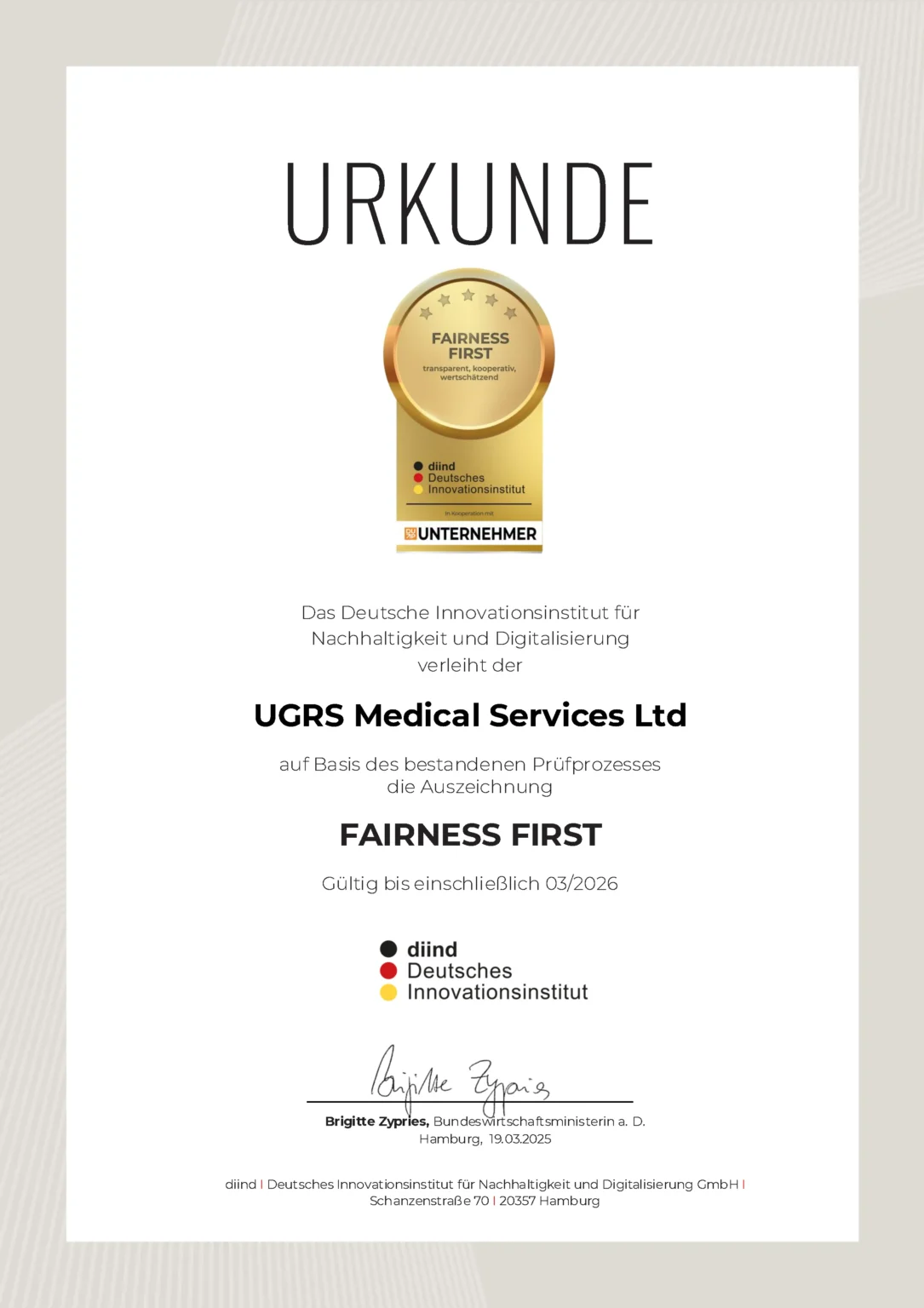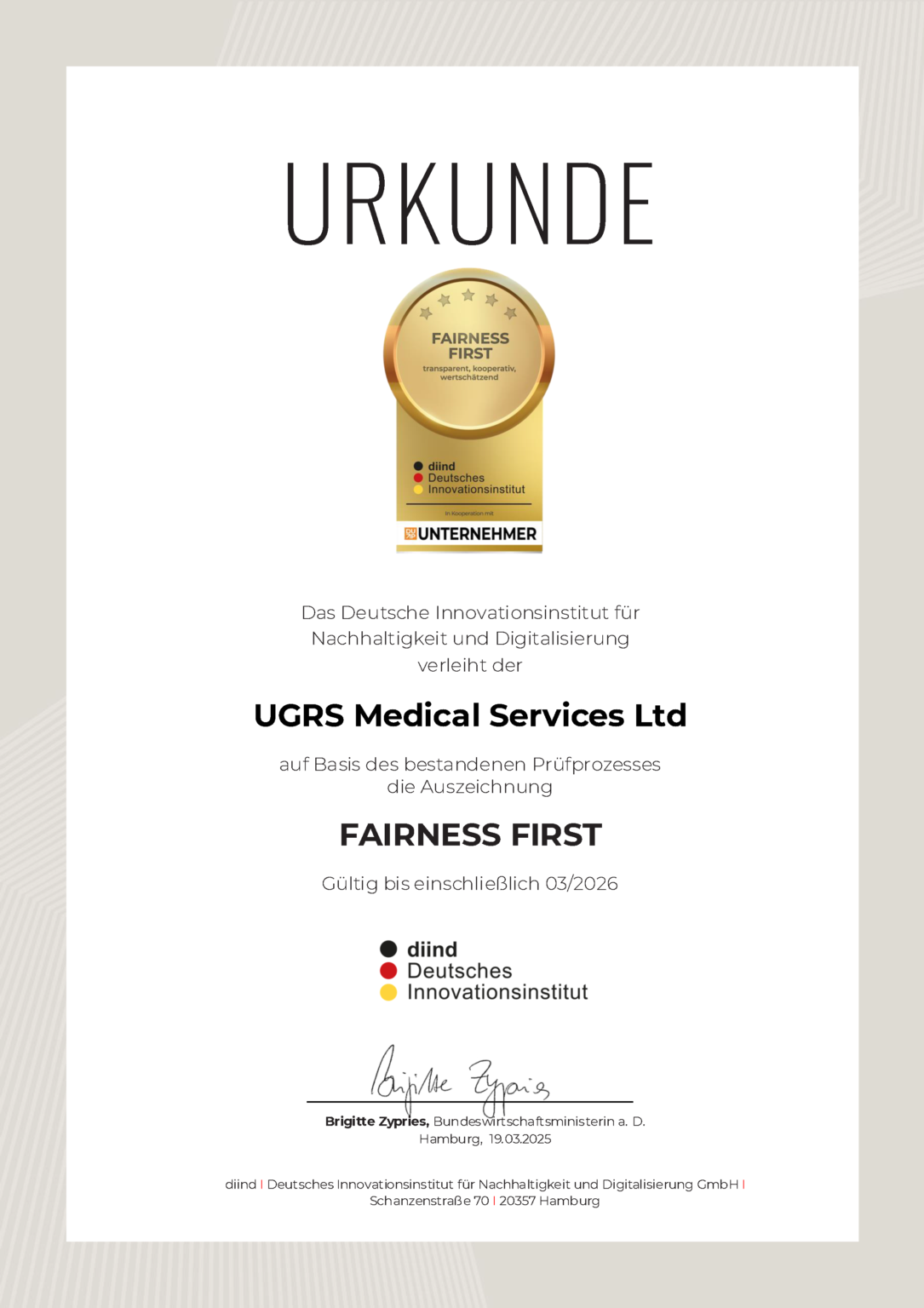- What is Induratio Penis Plastica (Peyronie\’s disease)?
- How common is penile curvature?
- How is induratio penis plastica (Peyronie\’s disease) diagnosed?
- What are the causes and symptoms of induratio penis plastica?
- What psychological problems are caused by induratio penis plastica?
- How does induratio penis plastica (Peyronie\’s disease) progress over time?
- What non-surgical treatments are available for Induratio Penis Plastica (Peyronie\’s disease)?
- Is early action important?
- When does surgery make sense for induratio penis plastica (Peyronie\’s disease) and what techniques are available?
Home » Treatments » Peyronie’s disease (Induratio Penis Plastica)
What is Peyronie's disease (Induratio Penis Plastica)?
- What is Induratio Penis Plastica (Peyronie\’s disease)?
- How common is penile curvature?
- How is induratio penis plastica (Peyronie\’s disease) diagnosed?
- What are the causes and symptoms of induratio penis plastica?
- What psychological problems are caused by induratio penis plastica?
- How does induratio penis plastica (Peyronie\’s disease) progress over time?
- What non-surgical treatments are available for Induratio Penis Plastica (Peyronie\’s disease)?
- Is early action important?
- When does surgery make sense for induratio penis plastica (Peyronie\’s disease) and what techniques are available?
- What is Induratio Penis Plastica (Peyronie\’s disease)?
- How common is penile curvature?
- How is induratio penis plastica (Peyronie\’s disease) diagnosed?
- What are the causes and symptoms of induratio penis plastica?
- What psychological problems are caused by induratio penis plastica?
- How does induratio penis plastica (Peyronie\’s disease) progress over time?
- What non-surgical treatments are available for Induratio Penis Plastica (Peyronie\’s disease)?
- Is early action important?
- When does surgery make sense for induratio penis plastica (Peyronie\’s disease) and what techniques are available?
What is Peyronie's disease (Induratio Penis Plastica)?
Peyronie’s disease (Induratio Penis Plastica), is a benign disease of the penis. A hardening (plaque) forms in the tissue of the erectile tissue, which often leads to a curvature during erection. It was described as early as the 16th century and then in detail in 1743 by the French physician François de la Peyronie.
How common is penile curvature?
Around 5% of men are affected – mainly between the ages of 40 and 60. However, young men can also develop Peyronie’s disease (Induratio Penis Plastica).
How is Peyronie's disease diagnosed?
Imaging diagnosis using MRI and differentiation from similar diseases is often difficult due to the lack of experience of the radiologist and urologist assessing this disease (Citation: 13).
Due to their expertise, UGRS doctors often serve as so-called tertiary medical centers.
The standard diagnostic procedures include:
- Ultrasound examination of the penis
- Physical examination (palpation)
- Anamnesis (patient's report on their problems)
Supplementary methods are used, for example:
- MRT (MRI), magnetic resonance imaging
- SKAT injection for the diagnosis of erectile dysfunction (ED)
What are the causes and symptoms of Peyronie's disease?
The exact causes are not fully understood. It is often caused by a connective tissue disorder, such as Dupuytren’s contracture, a disease of the hand that leads to restricted movement of the fingers. Genetic predisposition or previous operations in the pelvic area (e.g. prostate removal) can also play a role.
The molecular causes of the development of the disease are still unclear (Citation: 14).
Typical physical symptoms are
- Curvature of the penis during erection
- Palpable hardening under the skin
- Pain during erection
- Shortening of the penis
- Problems with erection (ED)
- Constrictions (“hourglass shape”) or irregular shape
- Decreased sensation at the head of the penis
UGRS.blog
In our UGRS.Blog we deal with developments and provide insights on many topics.
What psychological problems are caused by induratio penis plastica (Peyronie's disease)?
The psychological symptoms of induratio penis plastica are still underestimated.
The psychological effects of induratio penis plastica are serious, but still under-researched in medicine. Urologists and andrologists in the general healthcare system still pay too little attention to these psychological stresses (Citation: 9, 15).
The consequences are:
-
Social withdrawal and isolation
Men with Peyronie's disease often withdraw from social life. The fear of intimate situations and the shame about the penile changes lead to avoidance behavior. -
Serious relationship problems
The physical problems caused by induratio penis plastica (Peyronie's disease) put considerable strain on relationships. Pain during sexual intercourse, erectile dysfunction and curvature lead to communication problems and relationship crises. - Fight for recognition of mental health problems
Peyronie’s disease patients with significant psychological problems often have to fight for acceptance of these burdens (Citation: 9, 15)
Men with Peyronie's disease have a particularly difficult time because:
- Medical neglect: Penile diseases such as Peyronie's disease have long been neglected and insufficiently researched by the medical community (Citation: 9)
- Social taboos: In conservative societies, the myth was that the penis cannot be “defective”.
How does Peyronie's disease progress over time?
Peyronie’s disease usually begins with an unnoticed inflammation in the tissue of the penis. This develops into a scar (plaque), which can enlarge over months or years – particularly as a result of mechanical stress such as erections or sex. Spontaneous healing is rare. The plaque can lead to increasing curvature, shortening and erectile dysfunction (Citation: 2, 4).
Without treatment, the condition almost always gets worse. Many sufferers report severe losses in their sex life and self-esteem.
How can I stop an aggravation?
Patients with Peyronie’s disease often also suffer from Dupuytren’s contracture. And vice versa (Citation: 17, 18, 19).
If patients suffer from one of these diseases, they should definitely have the other disease checked in good time. This gives them the chance of early treatment and therefore the chance of better results.
In general, in our opinion and based on our extensive experience, early treatment is necessary to stop the condition from worsening.
Since there is no effective conservative therapy (Citation: 16), it does not make sense to let valuable time pass by trying conservative therapy.
What non-surgical treatments are available for Peyronie's disease?
In the early stages, attempts can be made to treat Peyronie’s disease with medication or physical therapy (e.g. shock waves or injections). The aim is to slow down the progression of hardening. Success depends heavily on the timing of the treatment.
The reality of conservative therapies
-
There are few effective treatment options without surgery
The options for treatment without surgery are severely limited. Many patients hope for gentle alternatives to surgery, but the medical reality is different. -
Scientific evidence is lacking
Despite promising announcements, there is no scientific evidence to date that any of the available non-surgical therapies work significantly better than a placebo (placebo effect) (Citation: 16)
What does “no better than placebo” mean?
The placebo effect explained: A placebo is a sham treatment without an active ingredient. If patients believe that they are receiving an effective medication, their symptoms can improve through this expectation alone. A real therapy must work significantly better than this psychological effect.
New processes raise hopes
New, non-surgical treatment methods are regularly developed and tested.
What new procedures are there?
- Hyaluronic acid: If hyaluronic acid is injected into the focus of the disease in the early phase of the disease, this appears to be able to partially halt further deterioration. Further research on this is necessary (Citation: 10)
- Collagenase: An attempt can be made to inject collagenase into the focus of the disease in the early phase of the disease in order to alleviate symptoms. This procedure is the only injection procedure approved by the FDP for induratio penis plastica. Further research is needed (Citation: 8)
- Restorative methods: These include various new techniques. However, these are not yet recommended by the US American Biological Association or the European Urological Association. We do not recommend them either. Further research is needed (Citation: 6, 7).
Patients should therefore have realistic expectations of non-surgical treatments and not be deceived by untested promises of a cure.
We do not recommend the use of conservative methods because so far none of the conservative methods have shown results that have convinced us as experts.
Our opinion is based on the scientific findings mentioned above.
Early action is important
As you have experienced, there is unfortunately no effective conservative therapy.
In our extensive experience, especially as a tertiary medical center for Peyronie’s disease, waiting worsens the symptoms and complicates the treatment of this complex disease.
Our opinion is based on the scientific findings mentioned above.
It is also based on general logic: if a focus of disease is surgically removed, it can neither continue to grow nor worsen.
Spontaneous healing is rare
There are also only a few cases of spontaneous healing, i.e. cases in which the disease goes away on its own. However, it is very rare
When does surgery make sense for Peyronie's disease and what techniques are available?
If the penis is severely curved, painful or the erection decreases significantly, surgery can help. Depending on the severity, various procedures can be considered – such as removal of the plaques, tissue implants or the so-called Nesbit technique.
Modern surgical techniques can often restore the shape and function of the penis. A precise diagnosis and individual consultation are important.
What surgical options are there for Peyronie's disease - and which one makes sense?
Important note:
The surgical treatment of Peyronie’s disease is extremely complex and requires a physician experienced in reconstructive surgery. This is the only way to minimize the risks and achieve good results (Citation: 11, 12).
There are several surgical methods for treating Peyronie’s disease. Our technique, the grafting technique, is the only one that completely removes the focus of the disease itself and all associated symptoms. The other three known techniques each treat only a single symptom.
In the following, we first present our method and then explain the alternatives.
How does microsurgical removal of Peyronie's disease plaques with biological reconstruction work?
This method is the technique used by UGRS doctors to treat induratio penis plastica. It is also known as the grafting method in various versions.
One of the founding fathers of UGRS, Dr Kostas Konstantinides, had already specialized in the grafting technique in the 1980s.
What exactly is done with this method?
- The Peyronie's disease plaque and its scarred extensions are often completely removed by microsurgery.
- The affected parts of the erectile tissue are then reconstructed - without artificial material. Instead, we use a high-quality, biodegradable collagen fleece.
The collagen fleece used is completely remodeled by the body into its own tissue – without scarring. It acts like a biological scaffold that is replaced by the body with healthy tissue.
In order to be able to offer this grafting technique successfully and at low risk, it is essential to have a doctor who is highly experienced in reconstructive surgery (Citation: 11, 12)
Simple short-term physiotherapy (a few minutes a day for about two months) helps to make the natural remodeling elastic and prevent new hardening.
In our experience as a tertiary medical center, this method is in most cases the only really sensible surgical solution for induratio penis plastica (Peyronie’s disease).
Special feature with simultaneous erectile dysfunction
If severe cases of Peyronie’s disease are accompanied by severe erectile dysfunction, the operation should be planned differently.
Erectile dysfunction caused by severe Peyronie’s disease is usually not improved by grafting surgery alone.
The gold standard in surgical therapy is the use of a hydraulic penile prosthesis (Citation: 11).
What happens with the Nesbit or Essed-Schröder technique (similar to Nesbit) - and what are the disadvantages?
These techniques date back to the 1960s and are still frequently performed – mostly because of their simplicity, low costs and good billability in everyday clinical practice.
We don’t think this is good. The focus of the disease is left in place and, in our experience, the results are poor. Our opinion based on experience has also been scientifically confirmed (Citation: 12).
How does the Nesbit operation work?
- The Peyronie's disease plaque remains completely in the body.
- Instead of removing it, an artificial “plaque” is created on the opposite, healthy side of the penis using a so-called gathering suture.
- The aim is to shorten the healthy side so that the curved side appears straight.
What does this mean for the patient?
- The penis is shortened - by up to 8 cm depending on the curvature.
- Patients often have to stay in hospital for 5 to 7 days to prevent erectile dysfunction during the initial healing phase.
- Frequent complications: Pain during erection (up to 48%), new curvatures to the other side, recurrence of Peyronie's disease.
- Multiple interventions often result in a non-functioning penis.
We fundamentally reject this method because it does not treat the source of the disease, but damages healthy tissue.
Why is the best method often not offered?
Induratio Penis Plastica is a rare disease. Many clinics – even university clinics – only treat a few patients per year. The cost of training a specialist is hardly worthwhile economically.
What’s more, statutory health insurance usually only pays around 2,500 euros for Peyronie’s disease operations – whereas a prostate operation can cost between 5,000 and 15,000 euros.
For this reason, many clinics resort to the simple Nesbit technique – even though it is outdated and does not represent a causal therapy.
A quote from Prof. Dr. med. Böhm from the specialist journal Chirurgische Allgemeine (issue 4/2009) sums it up perfectly:
“How often do we send a patient elsewhere because a colleague can do it better? Certainly rarely. Why is that? Because we prefer to offer the other procedure ourselves – even if we can’t do it as well.”
The psychological symptoms should also be treated effectively
Physical treatment should be supplemented by psychological treatment wherever necessary:
- Psychological support: therapy with sex therapists or psychologists
- Open communication: talk to your partner about the illness
- Self-help groups: Exchange with other Peyronie's disease sufferers
Peyronie’s disease is a serious condition that needs to be treated both physically and psychologically. Early, holistic therapy can significantly improve the quality of life (Citation: 15).
How does the treatment begin?
Our secretarial staff will be happy to deal with your inquiries. You can reach them at
Of course, our team of doctors is also available for well-founded second opinions
The medical information provided on this website is for general information purposes only and does not replace a personal consultation with our doctors. As a tertiary medical center, we are also available for second opinions.
© Copyright Jörg Hagen, Doctor
About the author
Jörg Hagen, doctor
The author Jörg Hagen has been the medical director of UGRS International Germany since 1995 and has over 30 years of experience in penis enlargement and complex urological issues. He is regarded as one of the leading experts in the interests of patients in Europe. His international activities, excellent diagnostics and legal successes in patient rights make his assessments particularly well-founded. Patients appreciate his scientifically based, discreet and trustworthy care. His articles are based on many years of practice and well-founded information at the highest level.
List of sources:
1. Ziegelmann MJ, Bajic P, Levine LA. (2020) Peyronie’s disease: Contemporary evaluation and management. Int J Urol. 2020 Jun;27(6):504-516.
DOI: Link
PubMed: Link
2 Roadman D, Wang V, Beer A, Levine L. (2024) A contemporary assessment of the evaluation and management of patients presenting to a tertiary medical center with Peyronie’s disease. Int J Impot Res. 2024 Apr;36(2):118-124.
DOI: Link
PubMed: Link
3 Cosentino M, Di Nauta M, Boeri L, Ferraioli G, Lucignani G, Ricapito A, Gadda F, Iafrate M, Mancini M, Dal Moro F, Ruiz-Castañe E, Bettocchi C, Montanari E, Sofikitis N. (2024) Conservative treatment of Peyronie’s disease: a guide. World J Urol. 2024 May 13;42(1):317.
DOI: Link
PubMed: Link
4 Anderson D, Laforge J, Ross MM, Vanlangendonck R, Hasoon J, Viswanath O, Kaye AD, Urits I. (2022 ) Male Sexual Dysfunction. Health Psychol Res. 2022 Aug 20;10(3):37533.
DOI: Link
PubMed: Link
5. Reddy AG, Dai MC, Song JJ, Pierce HM, Patel SR, Lipshultz LI. (2023) Peyronie’s Disease: An Outcomes-Based Guide to Non-Surgical and Novel Treatment Modalities. Res Rep Urol. 2023 Feb 2;15:55-67.
DOI: Link
PubMed: Link
6 Mesquita FC, Barros R, Lima TFN, Velasquez D, Favorito LA, Pozzi E, Dornbush J, Miller D, Petrella F, Ramasamy R. (2024) Evidence of restorative therapies in the treatment of Peyronie’s disease: A narrative review. Int Braz J Urol. 2024 Nov-Dec;50(6):703-713.
DOI: Link
PubMed: Link
7 Alshuaibi M, Zugail AS, Lombion S, Beley S. (2024) New protocol in the treatment of Peyronie’s disease by combining platelet-rich plasma, percutaneous needle tunneling, and penile modeling: Preliminary results. Fr J Urol. 2024 Jan;34(1):102526.
DOI: Link
PubMed: Link
8. Li EV, Esterquest R, Pham MN, Panken EJ, Amarasekera C, Siebert A, Bajic P, Levine LA. (2021) Peyronie’s disease: pharmacological treatments and limitations. Expert Rev Clin Pharmacol. 2021 Jun;14(6):703-713.
DOI: Link
PubMed: Link
9. Aditya I, Kwong JCC, Krakowsky Y, Grober ED. (2020) Non-conventional therapies for Peyronie’s disease: what is the evidence for efficacy? Transl Androl Urol. 2020 Mar;9(Suppl 2):S295-S302.
DOI: Link
PubMed: Link
10 Abdel Fattah AAE, Diab T, El-Dakhakhny AS, El Hamshary SA. (2024 ) Intralesional injection of hyaluronic acid compared with verapamil in acute phase of Peyronie’s disease: A prospective randomized clinical trial. Arab J Urol. 2024 Mar 22;22(4):206-211.
DOI: Link
PubMed: Link
11 Kadıoğlu A, Gürcan M, Rakhmonovich AF, Dursun M. (2024 ) Surgical management of complex curvature in Peyronie’s disease. World J Urol. 2024 Apr 30;42(1):276.
DOI: Link
PubMed: Link
12 Chung E. (2020) Penile Reconstructive Surgery in Peyronie’s Disease: Challenges in Restoring Normal Penis Size, Shape, and Function. World J Mens Health. 2020 Jan;38(1):1-8.
DOI: Link
PubMed: Link
13 Rajamohan N, Kapoor H, Khurana A, Nelson L, Ganesh HS, Khatri G, Nair RT. (2025 ) MR imaging of penile pathology and prostheses. Abdom Radiol (NY). 2025 Jan;50(1):305-318.
DOI: Link
PubMed: Link
14. Şahin A, Babayev H, Cirigliano L, Preto M, Falcone M, Altıntas E, Gül M. (2024 ) Unveiling the molecular hallmarks of Peyronie’s disease: a comprehensive narrative review. Int J Impot Res. 2024 Dec;36(8):801-808.
DOI: Link
PubMed: Link
15 Goldstein I, Hartzell R, Shabsigh R. (2016) The Impact of Peyronie’s Disease on the Patient: Gaps in Our Current Understanding. J Sex Marital Ther. 2016;42(2):178-90.
DOI: Link
PubMed: Link
16. Lee HY, Pyun JH, Shim SR, Kim JH. (2024) Medical Treatment for Peyronie’s Disease: Systematic Review and Network Bayesian Meta-Analysis. World J Mens Health. 2024 Jan;42(1):133-147.
DOI: Link
PubMed: Link
17. Nugteren HM, Nijman JM, de Jong IJ, van Driel MF. (2011) The association between Peyronie’s and Dupuytren’s disease. Int J Impot Res. 2011 Jul-Aug;23(4):142-5.
DOI: Link
PubMed: Link









